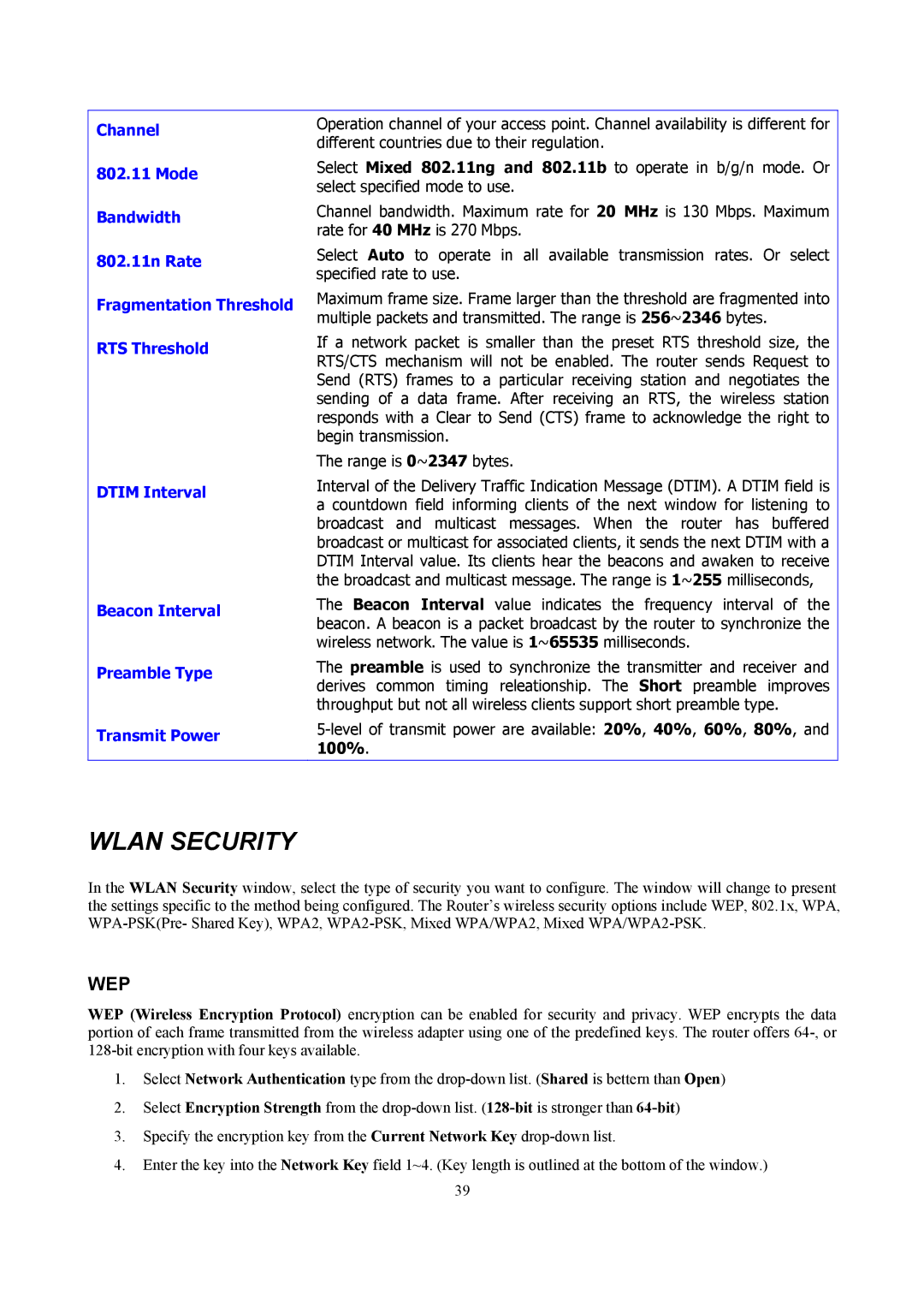
Channel
802.11Mode
Bandwidth
802.11n Rate Fragmentation Threshold RTS Threshold
DTIM Interval
Beacon Interval
Preamble Type
Transmit Power
Operation channel of your access point. Channel availability is different for different countries due to their regulation.
Select Mixed 802.11ng and 802.11b to operate in b/g/n mode. Or select specified mode to use.
Channel bandwidth. Maximum rate for 20 MHz is 130 Mbps. Maximum rate for 40 MHz is 270 Mbps.
Select Auto to operate in all available transmission rates. Or select specified rate to use.
Maximum frame size. Frame larger than the threshold are fragmented into multiple packets and transmitted. The range is 256~2346 bytes.
If a network packet is smaller than the preset RTS threshold size, the RTS/CTS mechanism will not be enabled. The router sends Request to Send (RTS) frames to a particular receiving station and negotiates the sending of a data frame. After receiving an RTS, the wireless station responds with a Clear to Send (CTS) frame to acknowledge the right to begin transmission.
The range is 0~2347 bytes.
Interval of the Delivery Traffic Indication Message (DTIM). A DTIM field is a countdown field informing clients of the next window for listening to broadcast and multicast messages. When the router has buffered broadcast or multicast for associated clients, it sends the next DTIM with a DTIM Interval value. Its clients hear the beacons and awaken to receive the broadcast and multicast message. The range is 1~255 milliseconds,
The Beacon Interval value indicates the frequency interval of the beacon. A beacon is a packet broadcast by the router to synchronize the wireless network. The value is 1~65535 milliseconds.
The preamble is used to synchronize the transmitter and receiver and derives common timing releationship. The Short preamble improves throughput but not all wireless clients support short preamble type.
WLAN SECURITY
In the WLAN Security window, select the type of security you want to configure. The window will change to present the settings specific to the method being configured. The Router’s wireless security options include WEP, 802.1x, WPA,
WEP
WEP (Wireless Encryption Protocol) encryption can be enabled for security and privacy. WEP encrypts the data portion of each frame transmitted from the wireless adapter using one of the predefined keys. The router offers
1.Select Network Authentication type from the
2.Select Encryption Strength from the
3.Specify the encryption key from the Current Network Key
4.Enter the key into the Network Key field 1~4. (Key length is outlined at the bottom of the window.)
39
